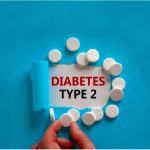The Food and Drug Administration approves Boehringer Ingelheim’s Pradaxa (dabigatran etexilate) oral pellets to treat venous thromboembolism (VTE) in children aged 3 months to < 12 years who are previously treated with an anticoagulant, administered via injection for a minimum of 5 days1. Dabigatran is the first oral anticoagulant approved for children. Dabigatran etexilate, can also reduce the risk of recurrent clots in the same age range population who completed the treatment for initial VTE. FDA has also approved capsule form of Pradaxa for children aged 8 years and older for the treatment of VTE (following the 5-day course of parenteral anticoagulant), and for the secondary prevention of VTE (after completing the treatment for initial VTE)
Venous Thromboembolism (VTE) in Children
The incidence of thrombosis in children, particularly in hospitalized patients has risen significantly over the past decade. Venous thromboembolism (VTE) poses a significant challenge due to increasing complications in hospitalized children. Even though VTE incidence in children is considerably lower than in adults, the substantial morbidity and mortality associated with VTE in children have brought heightened awareness about VTE.
Venous thromboembolism includes deep vein thrombosis and pulmonary embolism- usually associated with underlying clinical conditions. The most substantial risk factor is venous catheterization, which accounts for more than 90% of neonatal VTE and almost 50% of VTE in children2. Other factors include malignancy, sepsis and intravascular coagulation, surgery, immobility, nephrotic syndrome, hormones, heparin-induced thrombocytopenia, inherited prothrombotic disorders, factor V Leiden mutation, elevated lipoprotein(a) levels and homocysteine, antithrombin deficiency, deficiency of protein S and protein C, etc.
The key goals of the treatment are to prevent extension, embolism, and the recurrence of thrombosis. Anticoagulant therapy remains the cornerstone of the treatment, unfractionated heparin (UFH) and low-molecular-weight heparin (LMWH) are frequently used initial treatment of VTE.
In children, the standard of care (SOC) for secondary prevention of VTE includes LMWHs or oral vitamin K antagonists (VKAs).4 However, VTE treatments are nevertheless facing several limitations such as parenteral administration, variable effects of VKA, delayed onset of action and narrow therapeutic window of VKA, VKA-associated dietary precautions, regular laboratory monitoring and dosing adjustments of anticoagulants, etc.
Dabigatran, the oral thrombin inhibitor is effective in treating VTE among adults and it has the potential to overcome few limitations of SOC in children.
Clinical Trial and FDA Approval
DIVERSITY Trial – In a randomized, controlled, open-label study, researchers assessed the safety and efficacy of Pradaxa for treating thrombosis relative to the SOC (UFH and LMWH) of VTE in 267 pediatric patients < 18 years. They assessed multiple clinical endpoints including complete thrombus resolution, freedom from mortality related to VTE, freedom from recurrent VTE, major bleeding events, etc. Findings showed 45.8% (n=81/177) patients treated with Pradaxa met the composite endpoint compared to 42.2% (n=38/90) patients who received SOC indicating that dabigatran is non-inferior to SOC.
In another open-label, single-arm safety prospective cohort study, researchers analyzed the safety of Pradaxa for the secondary prevention of VTE in the same pediatric population (n=214). The primary endpoints included recurrence of VTE, major and minor bleeding events, and mortality. Results showed recurrence VTE in 1.4% (n=3) patients, very less bleeding events, and no on-treatment death- indicated a favorable safety profile.
The most common side effects include gastrointestinal symptoms (upper abdominal pain, diarrhea, dyspepsia, nausea, and vomiting) and bleeding. Potential serious adverse events include serious and fatal bleeding. Not recommended for triple-positive antiphospholipid syndrome who are at high risk of thrombosis. Also, not recommended for patients with bioprosthetic heart valves.
Pradaxa black box warning cautions against premature treatment discontinuation which can increase the risk of thrombotic events, and also warns about the high risk of epidural and spinal hematomas in patients undergoing spinal procedures or receiving neuraxial anesthesia.
Read also about






